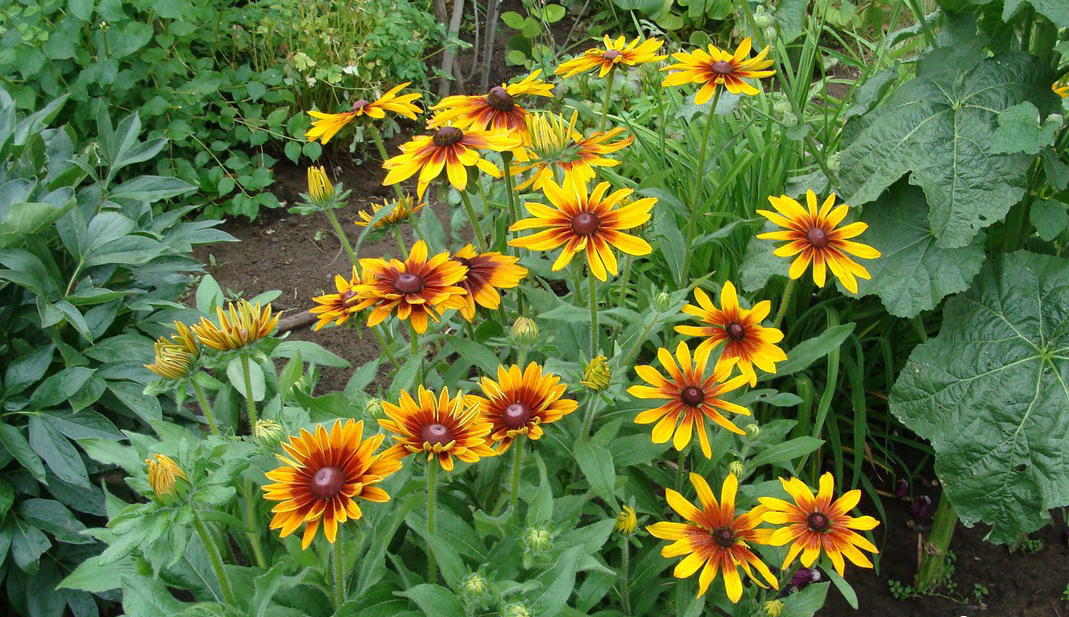 Perennial bright gailardia can become the main decoration of the garden. This sunny flower has large buds painted in yellow, orange and red tones. Summer residents fell in love with gaillardia for its flexible nature and long plentiful flowering.
Perennial bright gailardia can become the main decoration of the garden. This sunny flower has large buds painted in yellow, orange and red tones. Summer residents fell in love with gaillardia for its flexible nature and long plentiful flowering.
Content
Biological characteristics of the plant
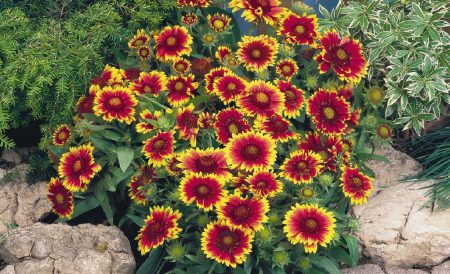 Gaylardia - a plant belonging to the family Aster. In the wild, the flower grows in the undergrowth of North and Central America. There are varieties of gaillardia that can please their beauty with only one season. But most representatives of this culture belong to perennials wintering in the open ground. The unusual name of the flower is due to the Frenchman Gaillard de Charentono, a famous lover of botany.
Gaylardia - a plant belonging to the family Aster. In the wild, the flower grows in the undergrowth of North and Central America. There are varieties of gaillardia that can please their beauty with only one season. But most representatives of this culture belong to perennials wintering in the open ground. The unusual name of the flower is due to the Frenchman Gaillard de Charentono, a famous lover of botany.
Perennial is a highly branched, sprawling bush, up to 70 centimeters high (depending on species and variety). Multiple curved hairy stems dotted with green elongated-oval foliage emerge from the basal leaves. At the ends of long peduncles, inflorescences with a diameter of 4 to 10 centimeters are formed, simple or double, variegated in yellow, brown and orange. One thing remains unchanged - the border of the flower is always yellow. Leaflets in the form of reeds on semi-double inflorescences are arranged in 2-3 rows. In terry plants, strongly fused middle petals emanate from the core in the form of a funnel. The fruit is a seed basket.
The plant blooms from mid-July to frost. The buds do not fall even with slight autumn frosts. After the flowers "serve", funnels with seeds appear in their place. With the flowering of inflorescences, the decorativeness of flower bushes decreases sharply.
Due to its decorativeness, gailardia looks great in the garden, on the terrace or in the cache-pot on the balcony. Designers use it for planting in borders, on flowerbeds, mixborders, discounts, rock gardens, for cutting.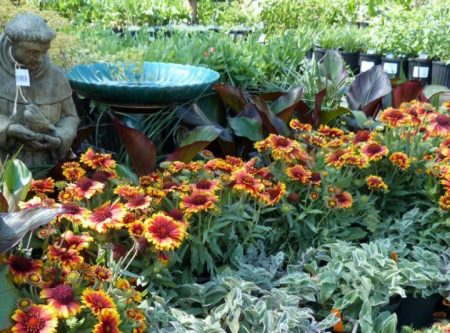
Advantages of culture:
- long flowering;
- unpretentiousness in leaving;
- different colors of flowers;
- a wide variety of shapes and textures of inflorescences;
- winter hardiness;
- retains decorativeness for several years;
- the possibility of rapid reproduction.
Types of perennial gailardia
There are about 30 types of perennial gaillardia. In home gardening, only two of them are widely used, characterized by brighter and longer flowering.
Hybrid
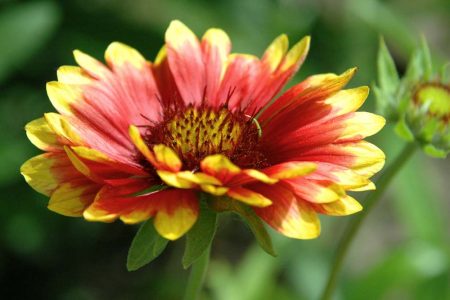 A hybrid variety of this flower appeared by crossing wild annuals and cultured spinous gaillardia. All varietal plants of this species are very similar to each other. The bushes grow to about 70-80 centimeters, have lanceolate hairy leaves and inflorescences of yellow and red colors with terry or semi-double flower baskets.
A hybrid variety of this flower appeared by crossing wild annuals and cultured spinous gaillardia. All varietal plants of this species are very similar to each other. The bushes grow to about 70-80 centimeters, have lanceolate hairy leaves and inflorescences of yellow and red colors with terry or semi-double flower baskets.
In a warm climate, hybrids bloom much earlier than usual - already in mid-June. The end of color falls on the last days of summer.
The most popular hybrid varieties:
| grade | a brief description of |
| Zone | A medium-sized plant (60-65 centimeters) with long flexible greenish shoots and volumetric flowers, which sometimes reach 10 centimeters in diameter. Inflorescences are dark yellow and golden in color. |
| Cobalt | Spreading undersized shrub, 40 centimeters high. The stems are branched. Inflorescences are large. Petals are yellow in the center and red at the edges. |
| Arizona | A small bush that barely reaches a height of 20 centimeters. The plant blooms in yellow and orange. The variety has a very long flowering.The buds open already in early June. |
| Primavera | A 25-centimeter plant with a lush flower crown (one rosette produces up to eight peduncles). The flowers are large, reaching 12 centimeters in diameter, painted in golden tones. |
| Burgunder | Plant height from 50 to 60 centimeters. Inflorescences have a rich burgundy color with yellow spots. |
| Tokajer | The shoots of a perennial tall plant are decorated with bright orange flowers of medium size. |
| Golden gobin | A low powerful bush has a solid-colored basket. Blooms profusely all summer. |
Spinous
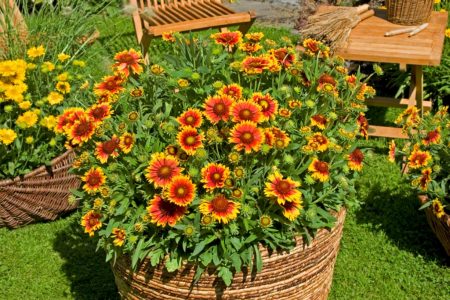 Another name for the species is large-flowered. Cultivated since 1812. Perennial is a 75-centimeter plant with long upright shoots, which during flowering can decay to the sides, which affects the decorativeness of gailardia. Therefore, the bushes need a garter to the support. Foliage of the same shape and color as other varieties of culture. They can be oval or elongated or lanceolate. The edge of the leaf plate is often solid, less often serrated. The surface is very pubescent. The basal leaves are petiolate, and the stalks are sessile. A distinctive feature of the spinous variety are bright large inflorescences, contrasting against the green foliage background with bright sunny colors. Individual flowers reach 12-14 centimeters in diameter.
Another name for the species is large-flowered. Cultivated since 1812. Perennial is a 75-centimeter plant with long upright shoots, which during flowering can decay to the sides, which affects the decorativeness of gailardia. Therefore, the bushes need a garter to the support. Foliage of the same shape and color as other varieties of culture. They can be oval or elongated or lanceolate. The edge of the leaf plate is often solid, less often serrated. The surface is very pubescent. The basal leaves are petiolate, and the stalks are sessile. A distinctive feature of the spinous variety are bright large inflorescences, contrasting against the green foliage background with bright sunny colors. Individual flowers reach 12-14 centimeters in diameter.
The most common varieties:
| grade | a brief description of |
| Dazzer | Inflorescences of dark red, burgundy color. The ends of the petals are yellow. |
| Virral Flame | Inflorescences have a reed structure. The petals are bicolor - along the edges they are yellowish, and the core is bright red. |
| Mandarin | Spreading bush with red-orange inflorescences. The petals at the ends have distinct notches. They are arranged in 3-4 rows. |
| Croftway yellow | A variety whose inflorescences are fully painted in one color is yellow. |
Gailardia cultivation
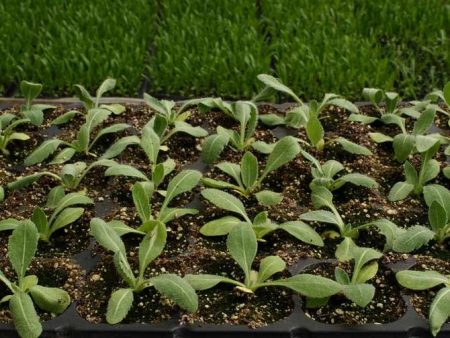 Gailardia grows well and blooms in sunny areas with dry, water-permeable, light non-acidic soils rich in humus. For healthy growth and abundant flowering, gaillardia also needs a lot of light and water.
Gailardia grows well and blooms in sunny areas with dry, water-permeable, light non-acidic soils rich in humus. For healthy growth and abundant flowering, gaillardia also needs a lot of light and water.
Gaylardia may not bloom at all in the shade.
Gailardia propagates by dividing bushes and seeds. The first method is suitable for old bushes, as the culture grows very slowly. Division is carried out in May or autumn, as soon as the last buds have faded and seed boxes remain in their place.
During seed propagation, seeds are sown in May. Shoots appear on 10-11 days. Dive them into nurseries or cold greenhouses, as soon as the sprouts acquire 2-3 leaves. In late summer or early September, young seedlings are planted in a permanent place in the flower garden, at a distance of 20 centimeters from each other. To make the bushes seem more lush, 2-3 seedlings are planted immediately in one hole. At the time of landing, the land is generously flavored. Humus, ash, compost and a portion of minerals are put in the hole. Seed plants bloom only in the second year of life. In one place, the flower grows well until 4-5 years, then it must be divided and transplanted.
During seed propagation, the color of future flowers may differ significantly from those grown on the mother plant.
Care
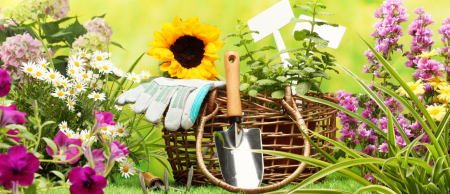 Gailardia does not require careful care. All that a perennial needs is water, infrequent top dressing, obligatory garter (for tall varieties) and a reliable shelter for the winter.
Gailardia does not require careful care. All that a perennial needs is water, infrequent top dressing, obligatory garter (for tall varieties) and a reliable shelter for the winter.
Many varieties grow in sizes impressive for a flower plant. Having a 70-80-centimeter height, the shoots often do not support their weight and fall apart in different directions, violating the beauty of the flower garden. As supports, wooden pegs or stems of other, stronger plants (for example, irises) are used.
Before flowering, it is necessary to stimulate the plant to build up abundant inflorescences.The best option would be to use mineral fertilizers with a high content of potassium. During the period of active flowering and after it, potassium-phosphorus fertilizers are added to the soil. Nitrogen fertilizing is arranged immediately after the planting of young bushes on the site and during their growth. Especially good in this regard to use humus, compost and infusions of grass. Further, fertilizers with the content of this element cease to make.
Top dressing with fresh manure is unacceptable!
Gaylardiya blooms beautifully throughout the summer without additional fertilizing. But if you want to enjoy the beauty of the front garden for a longer time, you can resort to a trick - remove faded buds in a timely manner, on the place of which new floral ovaries will immediately form.
One of the main advantages of the perennial is its good winter hardiness. For the winter, flowers do not need to be dug up or transplanted into pots. Plants perfectly winter in the open ground. However, during cold and low-snowy winters, experts still recommend covering the flower bed with foliage or spruce branches in order to protect the rhizome from freezing. In the autumn, before the onset of stable frosts, all branches are completely cut off, leaving 5-7 cm stumps, and only then covered with a “blanket”.
Diseases and Pests
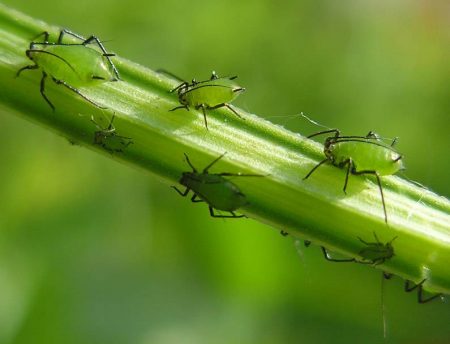 Most often, gaillardia is affected by fungal diseases, in particular, it is attacked by rot, powdery mildew, spotting. All infections appear due to improper watering of the plant. Gaylardiya is demanding on high soil moisture, but does not tolerate strong moisture. Flowers need to be watered often, but sparingly, creating semi-moisture, but not stagnation of water.
Most often, gaillardia is affected by fungal diseases, in particular, it is attacked by rot, powdery mildew, spotting. All infections appear due to improper watering of the plant. Gaylardiya is demanding on high soil moisture, but does not tolerate strong moisture. Flowers need to be watered often, but sparingly, creating semi-moisture, but not stagnation of water.
At the first symptoms of plant withering, it is necessary to take the necessary measures to save the flower garden with lightning speed: cut off all the affected leaves and treat the bushes with any fungicide (for example, Skor, Topaz). If there is no specialized product, ordinary potassium permanganate diluted with water is suitable. Watering for several days dramatically reduces or stops altogether. After 4-5 days, you can moisten the soil, while the ground part of the plant should remain dry.
Aphid is considered a culture-dangerous enemy. Often landing whitefly attacks. Protecting flowers from insects will help systematic spraying with insecticides like Actellik and Decis and traditional decoctions of wormwood, garlic and onion husks.
Seed collection
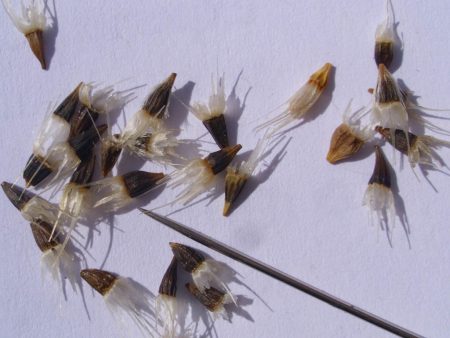 Seeds are collected from faded inflorescences. Withered buds are removed from the bush and incubated for 2-3 weeks, so that they dry thoroughly. Seeds are stored in a paper envelope or box until spring. However, when sowing their seeds, it should be remembered that genetically future plants will radically differ from varietal.
Seeds are collected from faded inflorescences. Withered buds are removed from the bush and incubated for 2-3 weeks, so that they dry thoroughly. Seeds are stored in a paper envelope or box until spring. However, when sowing their seeds, it should be remembered that genetically future plants will radically differ from varietal.
If the old inflorescences are not removed from the bush, then the seeds will spread by the wind themselves on the ground, and next year they will sprout without problems. Thick shoots can be thinned or planted in different parts of the garden.
To get hold of your own sun in the garden, you do not need to violate the laws of physics. It is enough just to plant colorful gaylardii, which will "illuminate" the district with their bright variegated flowers for many years will decorate the site.
